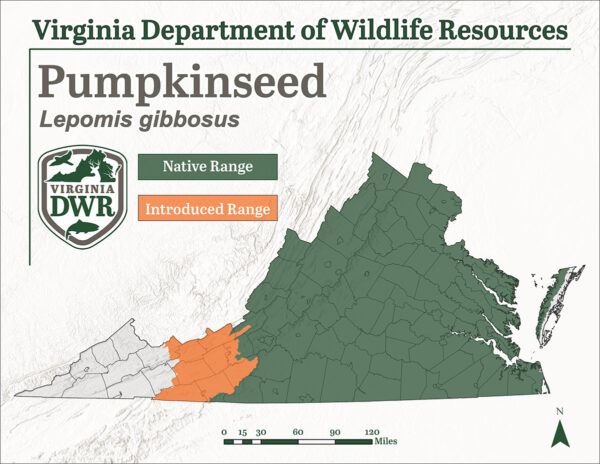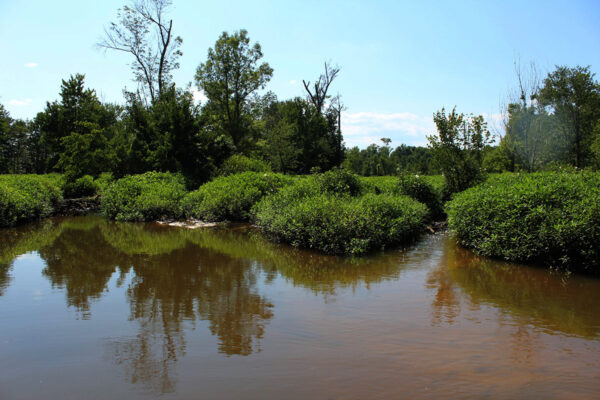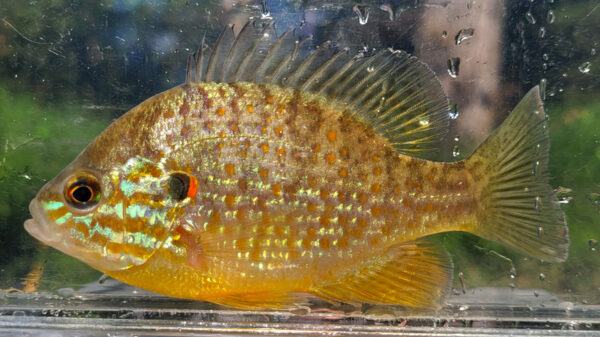Fact File
Scientific Name: Lepomis gibbosus
Classification: Fish, Order Perciformes, Family Centrarchidae
Size: Pumpkinseed average 4 to 6 inches in length in Virginia
Life Span: About 6 years in Virginia
Identifying Characteristics
- Mottled sides, often darker along the dorsal area
- Gill cover flap is edged with white, yellow, or blue surrounding a half-moon segment of red
- Sides can be dominated by yellows, blues, and oranges with a checkerboard pattern present
- Abdomen is yellow or orange
- Cheeks and gill covers marked with alternating worm-shaped bands of blue-green and yellow-orange
- Spines on the first dorsal and anal fin
Diet
Insects, crustaceans, and small mollusks.
Distribution:
Pumpkinseed are native to Virginia’s coastal plain, piedmont, and much of the blue-ridge. Introduced populations exist in the New River basin.

Habitat
Pumpkinseed can be found in shallower waters of lakes, ponds and streams where there is heavy vegetative cover.

A coastal plain tributary in Virginia, representative of areas where Pumpkinseed are commonly found.
Reproduction
Pumpkinseed spawn in late spring or early summer. Males fan out circular nests in gravels near the shoreline, often in as little as 6 to 12 inches of water. Pumpkinseed are very prolific spawners, capable of spawning more than once a year.
Last updated: August 14, 2024
The Virginia Department of Wildlife Resources Species Profile Database serves as a repository of information for Virginia’s fish and wildlife species. The database is managed and curated by the Wildlife Information and Environmental Services (WIES) program. Species profile data, distribution information, and photography is generated by the Virginia Department of Wildlife Resources, State and Federal agencies, Collection Permittees, and other trusted partners. This product is not suitable for legal, engineering, or surveying use. The Virginia Department of Wildlife Resources does not accept responsibility for any missing data, inaccuracies, or other errors which may exist. In accordance with the terms of service for this product, you agree to this disclaimer.


